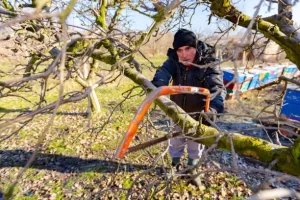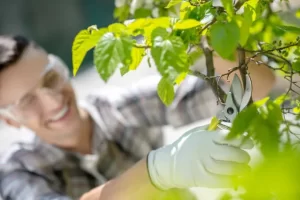Proper watering is crucial for maintaining healthy trees, and understanding which trees require the most water can help you ensure that your landscape remains vibrant and thriving. Different types of trees have varying water needs based on their species, size, and growth conditions. For more detailed information on tree care and watering, visit our Home Page and Service Pages.
Understanding Tree Watering Needs
Watering is essential for tree health for several reasons:
- Promotes Growth: Adequate water supports robust growth and overall health.
- Prevents Stress: Consistent watering helps trees cope with environmental stresses.
- Enhances Appearance: Properly watered trees are less likely to suffer from issues like yellowing leaves or stunted growth.
Different trees have different water requirements, and understanding these needs can help you manage your landscape more effectively.
Trees That Require the Most Water
Here’s a closer look at some tree species that generally require more water:
1. Willows (Salix spp.)
- Water Needs: Willows are known for their high water requirements. They thrive in moist environments and are often found near rivers, lakes, or wetlands.
- Why: Their extensive root systems are adapted to absorb large amounts of water. Regular watering is essential to maintain their health and vigorous growth.
For more information on caring for water-loving trees, visit our Tree Care Services page.
2. Red Maples (Acer rubrum)
- Water Needs: Red maples require moderate to high water levels. They grow well in areas with ample moisture and are often found in wetlands or along stream banks.
- Why: These trees have shallow roots that benefit from consistent watering, especially during dry periods.
Check out our Tree Maintenance Services for tips on managing water needs for different tree species.
3. American Sycamores (Platanus occidentalis)
- Water Needs: American sycamores are another species that thrive in moist conditions and require a lot of water.
- Why: They are often found in riparian zones and have extensive root systems that need regular watering to support their large size and growth.
For more insights into tree care and maintenance, visit our Tree Pruning Services page.
4. Bald Cypress (Taxodium distichum)
- Water Needs: Bald cypress trees are adapted to wet environments and require ample water to thrive.
- Why: They grow naturally in swampy areas and can tolerate flooding but need consistent moisture in drier conditions.
Consider visiting our Arborist Services page for professional advice on caring for water-intensive trees.
5. Black Cottonwood (Populus trichocarpa)
- Water Needs: Black cottonwoods require a high amount of water and are commonly found near rivers and wetlands.
- Why: Their extensive root systems are adapted to absorb large quantities of water from the surrounding environment.
For detailed information on maintaining trees with high water needs, visit our Tree Health Services page.

Trees That Require Less Water
While some trees need more water, others are more drought-tolerant. Here are a few examples:
1. Oaks (Quercus spp.)
- Water Needs: Oaks are relatively drought-tolerant once established. They can survive with less frequent watering.
- Why: They have deep root systems that help them access water from deeper soil layers.
2. Pines (Pinus spp.)
- Water Needs: Most pine trees are adapted to drier conditions and need less water compared to other species.
- Why: They have evolved to conserve water and thrive in less moist environments.
For tips on caring for drought-tolerant trees, check out our Tree Removal Services page.
Tips for Proper Tree Watering
To ensure that your trees receive the right amount of water, consider the following tips:
- Water Deeply: Trees benefit from deep, infrequent watering that encourages deep root growth. Avoid shallow, frequent watering.
- Monitor Soil Moisture: Check the soil around your trees to ensure it is consistently moist but not waterlogged.
- Use Mulch: Applying mulch around the base of the tree helps retain soil moisture and reduce evaporation.
- Adjust for Weather: Modify your watering schedule based on seasonal weather conditions and rainfall.
For expert advice on proper watering techniques, visit our Tree Maintenance Services page.

Consulting a Professional
Proper watering is just one aspect of comprehensive tree care. Consulting a professional arborist can provide you with tailored advice and solutions for your specific tree care needs.
- Expert Assessment: Arborists can assess the water needs of your trees and recommend the best watering practices.
- Custom Solutions: Professionals can help you design a watering schedule and provide solutions for managing tree health and moisture.
- Health Monitoring: Regular check-ups by an arborist can help identify and address potential issues before they become serious problems.
For professional tree care services, consider contacting Bieniek Tree Services. Our team of experts is here to assist you with all your tree care needs, ensuring that your landscape remains healthy and beautiful.
Conclusion
Understanding which trees require the most water is crucial for maintaining a healthy and thriving landscape. By providing the right amount of water and consulting with professionals when needed, you can ensure that your trees remain robust and visually appealing. For expert advice and services on tree care, visit Bieniek Tree Services. Our team is dedicated to helping you achieve the best results for your landscape.
